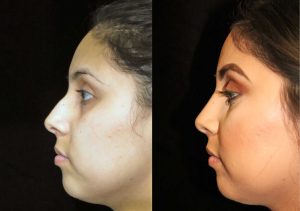French doors have long been celebrated for their timeless elegance and functionality. Originating in France during the Renaissance period, these doors are known for their large glass panels, which allow natural light to flood into spaces, creating an open and airy feel. This article explores the history, design options, benefits, and practical considerations of French doors, providing a thorough understanding of why they remain a popular choice in modern architecture and interior design.
History of French Doors
The origins of French doors date back to the Renaissance period in the 17th century. As the Renaissance promoted a renewed interest in art, architecture, and culture, French doors became a symbol of the era’s emphasis on light and proportion. Initially used as large windows, these doors evolved to include frames and hinges, allowing them to function as doors. They were designed to connect the interior and exterior of homes, offering both functionality and aesthetic appeal. Over time, French doors became popular across Europe and eventually around the world.
Design Options
French doors come in a variety of designs, making them versatile for different architectural styles and personal tastes. Here are some popular design options:
- Traditional French Doors: These feature multiple small glass panes separated by muntins (grid-like strips). They are often made from wood and can be painted or stained to match the home’s decor.
- Modern French Doors: These doors typically have fewer, larger glass panes for a sleek, minimalist look. They often use materials like aluminum or steel for a contemporary finish.
- Double French Doors: The classic style, consisting of two doors that open from the center, providing a wide entryway and a grand appearance.
- Single French Door: Ideal for smaller spaces, this design includes one door that swings open, retaining the elegant look while saving space.
- Sliding French Doors: Combining the elegance of French doors with the practicality of sliding doors, these are perfect for areas where space is limited.
- Bi-Fold French Doors: These doors fold back on themselves, offering a wider opening and a seamless connection between indoor and outdoor spaces.
Materials
The materials used in French doors significantly impact their durability, appearance, and maintenance. Common materials include:
- Wood: Offers a classic, warm look. Can be customized with paint or stain but requires regular maintenance to prevent warping and decay.
- Aluminum: Lightweight, strong, and resistant to corrosion. Often used in modern designs.
- Vinyl: Low-maintenance and energy-efficient. Available in various colors and finishes.
- Fiberglass: Durable and resistant to weather conditions. Can mimic the look of wood without the associated maintenance.
Benefits of French Doors
French doors offer numerous benefits that contribute to their enduring popularity:
- Natural Light: The large glass panels allow maximum natural light, reducing the need for artificial lighting and creating a bright, welcoming atmosphere.
- Aesthetic Appeal: French doors add a touch of elegance and sophistication to any space, enhancing both interior and exterior aesthetics.
- Versatility: Suitable for various architectural styles, from traditional to modern. They can be used as exterior doors, interior doors, or even room dividers.
- Indoor-Outdoor Connection: Ideal for patios, gardens, or balconies, French doors create a seamless transition between indoor and outdoor spaces, promoting an open, airy environment.
- Value Addition: Installing French doors can increase the resale value of a home due to their aesthetic and functional appeal.
Practical Considerations
While French doors offer many advantages, there are also practical considerations to keep in mind:
- Security: Traditional French doors with large glass panels can be a security concern. However, modern designs often include reinforced glass, multi-point locking systems, and other security features to enhance safety.
- Energy Efficiency: Large glass panels can result in heat loss during winter and heat gain during summer. Selecting energy-efficient glass options, such as double or triple glazing, can mitigate this issue.
- Maintenance: Depending on the material, French doors may require regular maintenance. Wood doors, for instance, need periodic painting or staining to prevent damage.
- Space: Swinging French doors require ample space to open fully. Sliding or bi-fold options can be more suitable for areas with limited space.
Installation Tips
Proper installation is crucial to ensuring the functionality and longevity of French doors. Here are some tips:
- Professional Installation: While DIY installation is possible, hiring a professional ensures the doors are properly aligned, sealed, and secure.
- Accurate Measurements: Ensure precise measurements to avoid gaps or misalignment, which can affect the door’s operation and energy efficiency.
- Weatherproofing: Proper sealing and weatherstripping prevent drafts, moisture infiltration, and energy loss.
- Security Features: Consider additional security measures, such as reinforced glass, strong locks, and security sensors.
Decorating with French Doors
French doors can be a focal point in any room, and there are several ways to enhance their beauty:
- Curtains and Drapes: Soft, flowing curtains add a touch of elegance while providing privacy. Sheer drapes can allow light while maintaining some privacy.
- Blinds and Shades: Offer privacy and light control. Roman shades, wooden blinds, or cellular shades can complement the style of French doors.
- Transoms and Sidelights: Adding a transom window above the doors or sidelights (narrow windows on either side) can enhance the visual appeal and allow even more light.
- Hardware: Decorative handles, hinges, and locks can add to the aesthetic of French doors. Choose finishes that match or complement the room’s decor.
Popular Uses for French Doors
French doors are incredibly versatile and can be used in various settings:
- Patio Doors: A common use for French doors is as patio doors, providing a beautiful transition between indoor living spaces and outdoor areas.
- Interior Room Dividers: French doors can be used to separate different areas within a home while maintaining an open feel. They are perfect for home offices, dining rooms, or living rooms.
- Balcony Access: French doors leading to a balcony can create a charming and functional entryway, enhancing the overall aesthetic of the home.
- Entryways: For a grand entrance, French doors can be used as the main entryway to a home, adding curb appeal and elegance.
Maintenance Tips
To keep French doors looking beautiful and functioning properly, follow these maintenance tips:
- Regular Cleaning: Clean the glass panels regularly to maintain clarity and prevent buildup. Use a mild glass cleaner and a soft cloth.
- Inspect for Damage: Periodically check for any signs of damage, such as cracks in the glass, warping of the frame, or issues with the hardware. Address any problems promptly to prevent further damage.
- Lubricate Hinges and Locks: Keep hinges and locks functioning smoothly by lubricating them with a suitable product. This prevents squeaking and ensures easy operation.
- Repaint or Refinish: If you have wooden French doors, repaint or refinish them as needed to protect the wood and maintain their appearance.
Trends in French Doors
French doors continue to evolve with design trends. Some current trends include:
- Black Frames: Black-framed French doors are increasingly popular for their modern, chic look. They offer a striking contrast to light-colored walls and add a bold statement.
- Energy-Efficient Glass: With a growing emphasis on sustainability, many homeowners are opting for energy-efficient glass options that improve insulation and reduce energy costs.
- Smart Technology: Incorporating smart locks and sensors into French doors enhances security and convenience, allowing homeowners to monitor and control access remotely.
- Custom Designs: Customization is key in modern design. Homeowners are choosing unique patterns, colors, and materials to create French doors that reflect their personal style.
Conclusion
French doors are a timeless and versatile addition to any home. With their rich history, variety of designs, and numerous benefits, they continue to be a popular choice for homeowners seeking to enhance their living spaces. Whether used as patio doors, room dividers, or entryways, French doors add elegance, natural light, and a seamless connection between indoor and outdoor areas. By considering the practical aspects of installation, maintenance, and security, homeowners can enjoy the beauty and functionality of French doors for years to come








